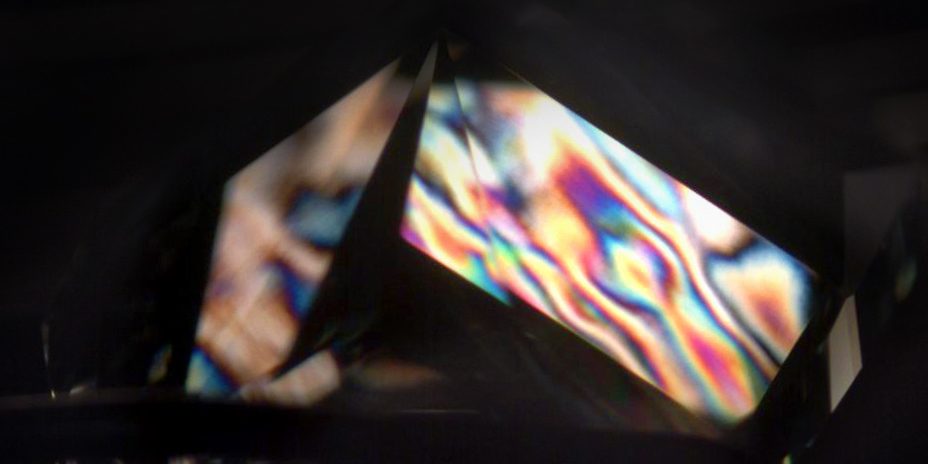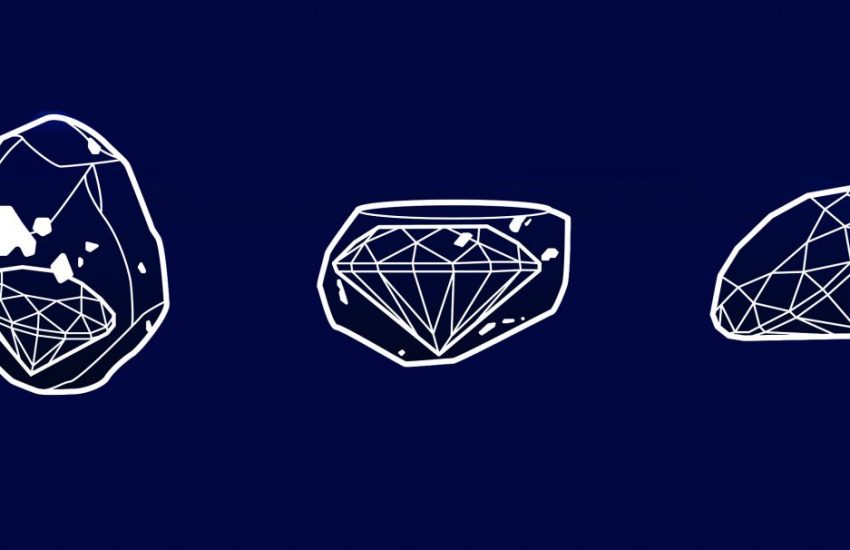Polar Plunge: Using Cross-Polarized Filters for Diamond Testing
Natural or lab grown? This is one of the most pressing questions in the diamond world, and one that prompts many to send their diamonds to a laboratory like GCAL by Sarine for testing. But the questions don’t stop there- if the diamond is lab grown, which type is it, CVD or HPHT? And how do gemologists determine this?
GCAL, like other gemological laboratories, uses multiple different pieces of equipment to determine diamond origin. This is done to remove the chance of a false ID- the results from each test must make sense together and the data must line up in order for a final result to be given. Many of these pieces of equipment are complex machines that use different types of spectroscopy to determine chemical properties. But one of them is surprisingly low-tech: A simple pair of polarized filters placed on the microscope of a diamond grader. Let’s walk through how we use them, what they can reveal, and why they should always be used in conjunction with other testing methods.
What are cross polarized filters?
Let’s first talk about what polarization means. Light, whether it’s natural light from the sun or artificial light from a lamp, is typically unpolarized. This means that the light waves are vibrating in different, random directions. Polarized light, on the other hand, is light that vibrates in only a single direction, due to being transmitted through some kind of special lens or substance. A polarized filter is a lens that blocks out light vibrating in all directions but one, so the remaining light able to pass through is polarized- only vibrating in a single direction.
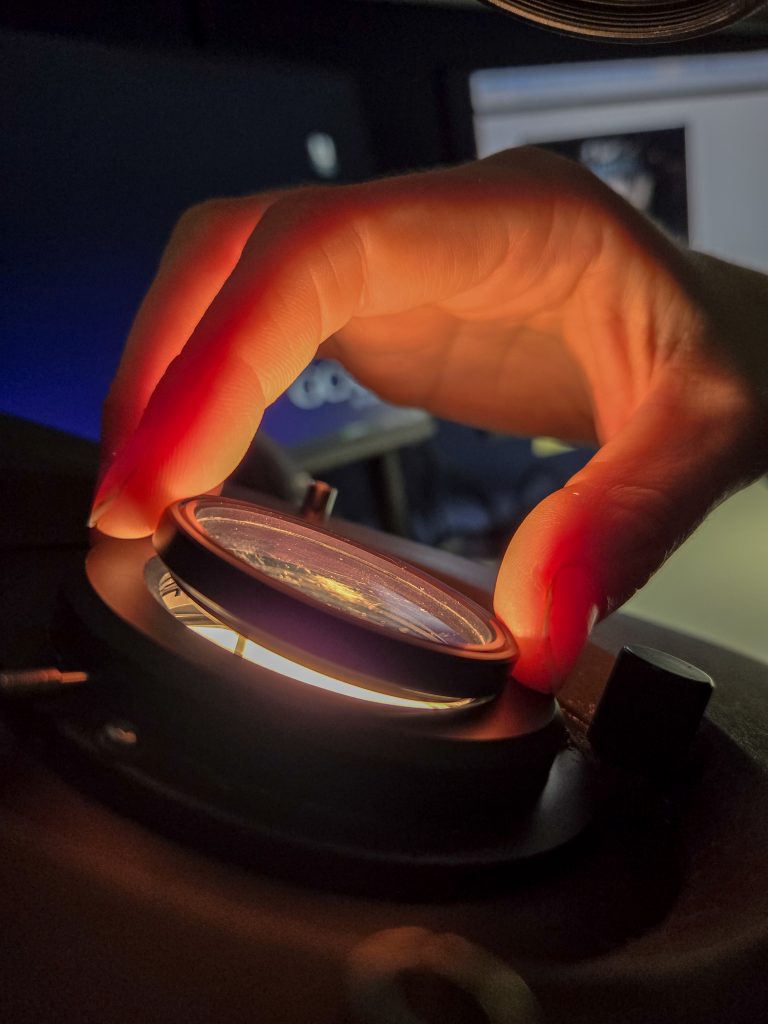
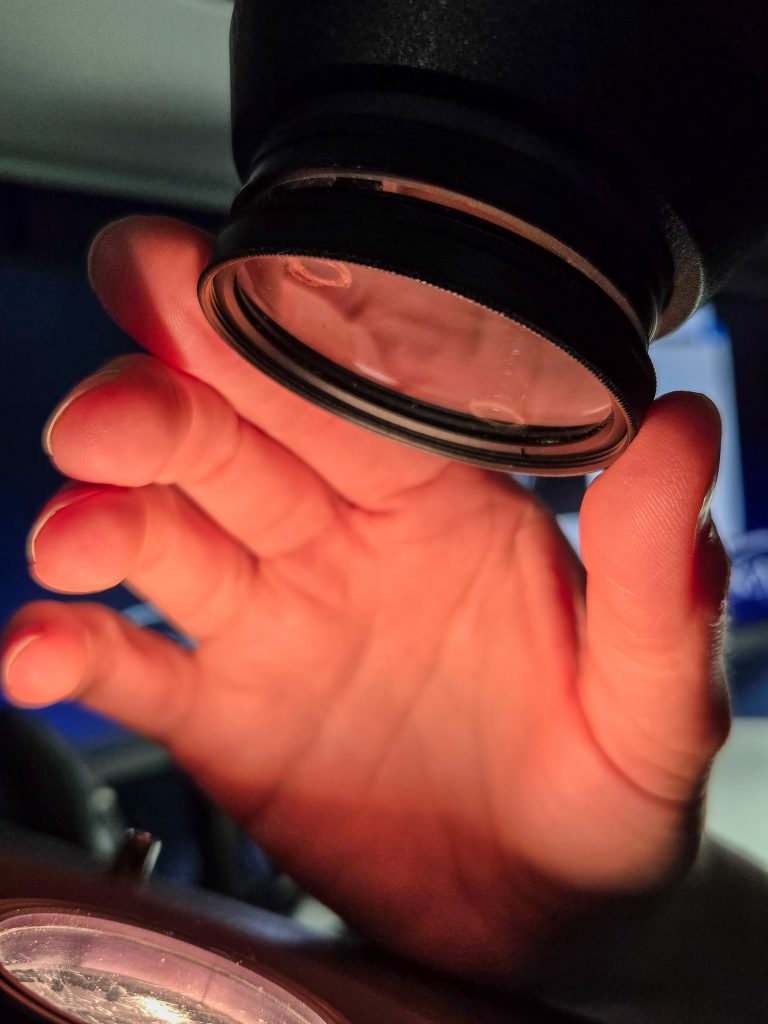
Cross-polarized filters are a pair of these filters. One goes directly on top of the microscope well, blocking out all but one direction of light coming from the light source underneath. The second filter is placed directly over the microscope lens. When the filters are aligned in the same direction, they are both letting through light vibrating in that one direction. The diamond grader looking into the microscope will be able to see a bright light. However, when one of the lenses is rotated 90 degrees, it is now blocking out that direction of light, and the grader’s view will become dark. The lenses are now “crossed” to block out all directions of light- hence, cross polarized filters.
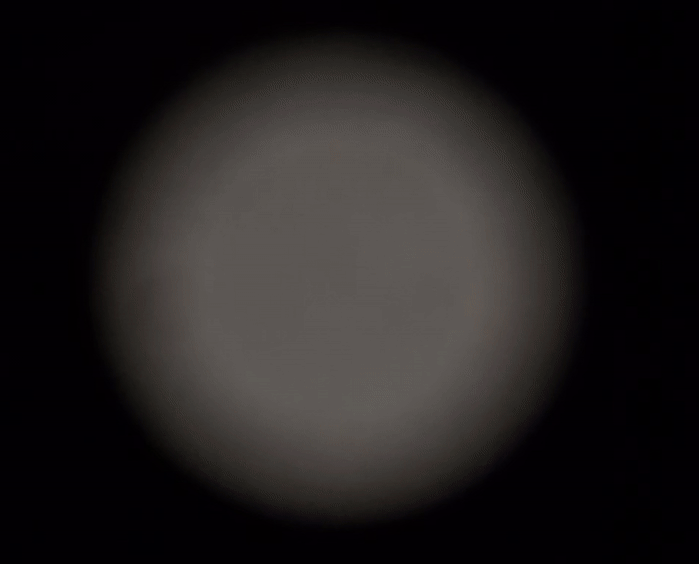
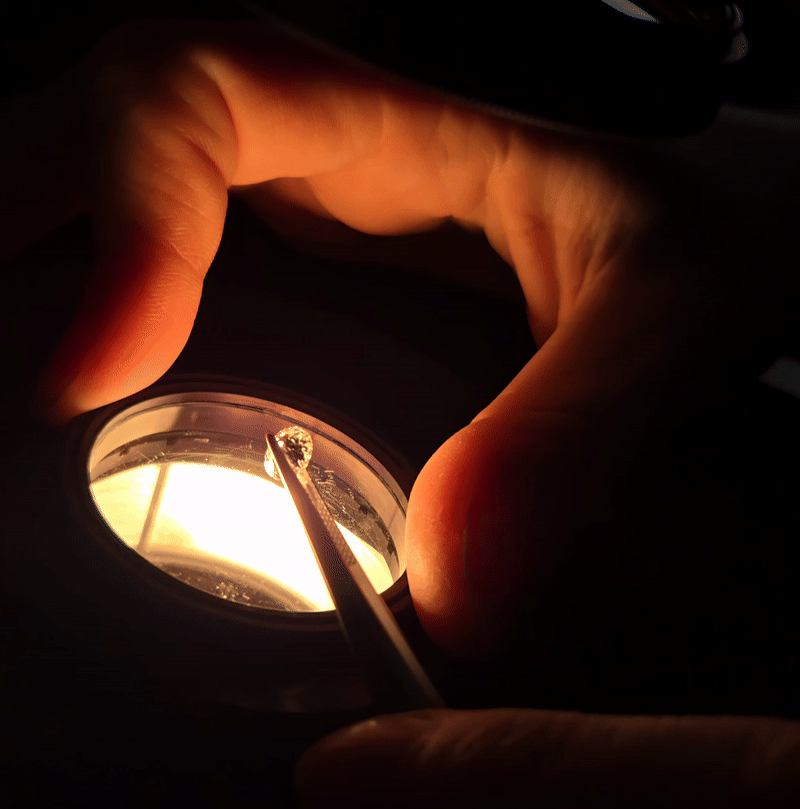
How are they used?
To use these filters, a diamond grader will first put them in the fully crossed position, where the field of view becomes the darkest. Then, using a pair of tweezers, they will hold the diamond in between the two filters and examine it from many different directions. Many diamonds will show what is called an interference pattern, or a pattern of shadows and rainbow colors. But why does this occur?
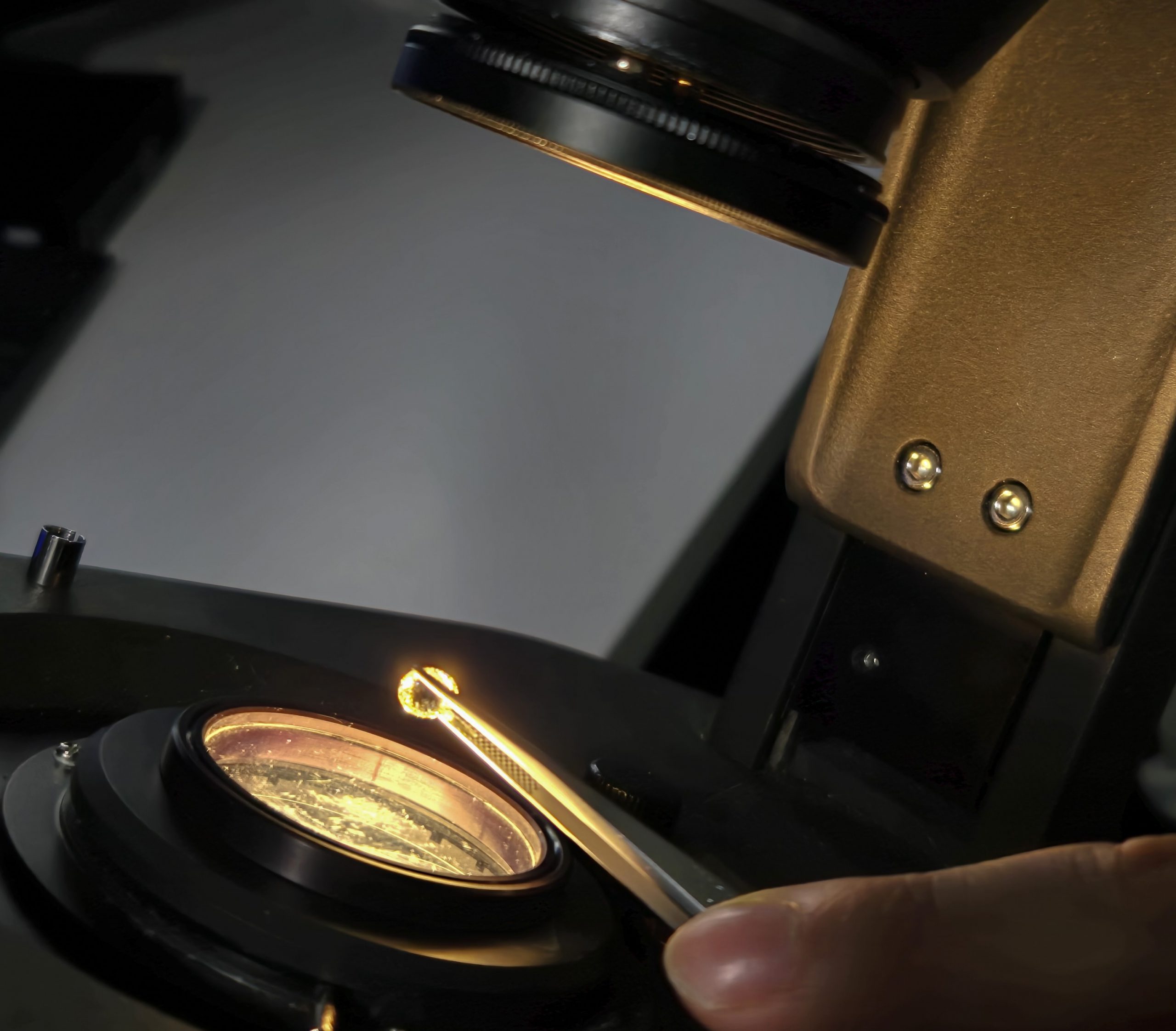
Since the crossed filters are blocking all directions of light, in order for a substance to appear light between them, it must be refracting that light in multiple directions. Once refracted, some of that light will inevitably line up with the direction of the upper filter- so now, instead of everything being dark, portions of the substance will appear light. Diamond is isotropic, meaning that it should typically only refract light in a single direction- in a perfect world, that means it wouldn’t show any reaction with the filters. However, in reality, most diamonds experience strain during their formation. This causes the crystal structure to become deformed or distorted during its growth, either in the Earth or in a factory. These structural deformations change how the diamond refracts light in certain areas, creating those light and dark patterns rather than the whole stone appearing light. This is called a birefringence strain pattern. These patterns will be different depending on how the crystal structure was affected during its growth.
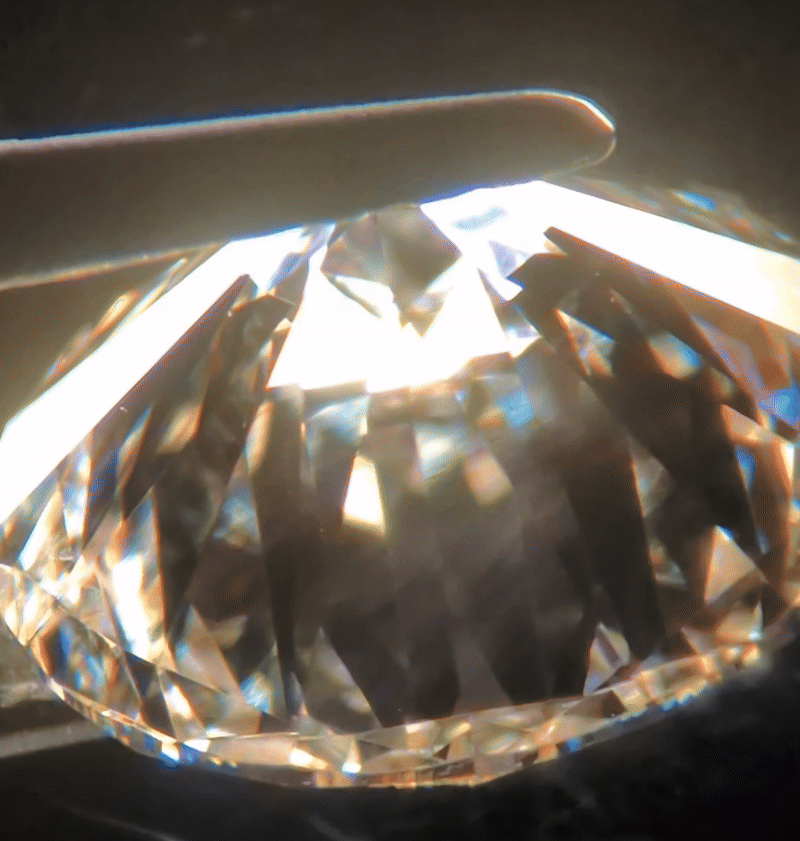
What can these patterns tell us about lab grown diamonds?
The most common way these filters are used in our laboratory is to separate the two types of lab grown diamonds- CVD and HPHT. That’s because they show vastly different, but consistent, reactions when viewed between cross polarized filters.
CVD stands for Chemical Vapor Deposition, which describes how they are created- vapor containing carbon is deposited in layers to eventually form a synthetic diamond crystal. This process creates a layered structure of strain within the diamond. When placed between the filters, this strain reveals itself in a strong, almost cross-hatch-looking pattern of intersecting parallel shadows, known as Tatami. Typically, all CVD diamonds will show this strain. But be careful! Natural Type II (nitrogen-free) diamonds can also exhibit a Tatami pattern. This is one of the reasons that we never use these filters as the sole identifying tool.
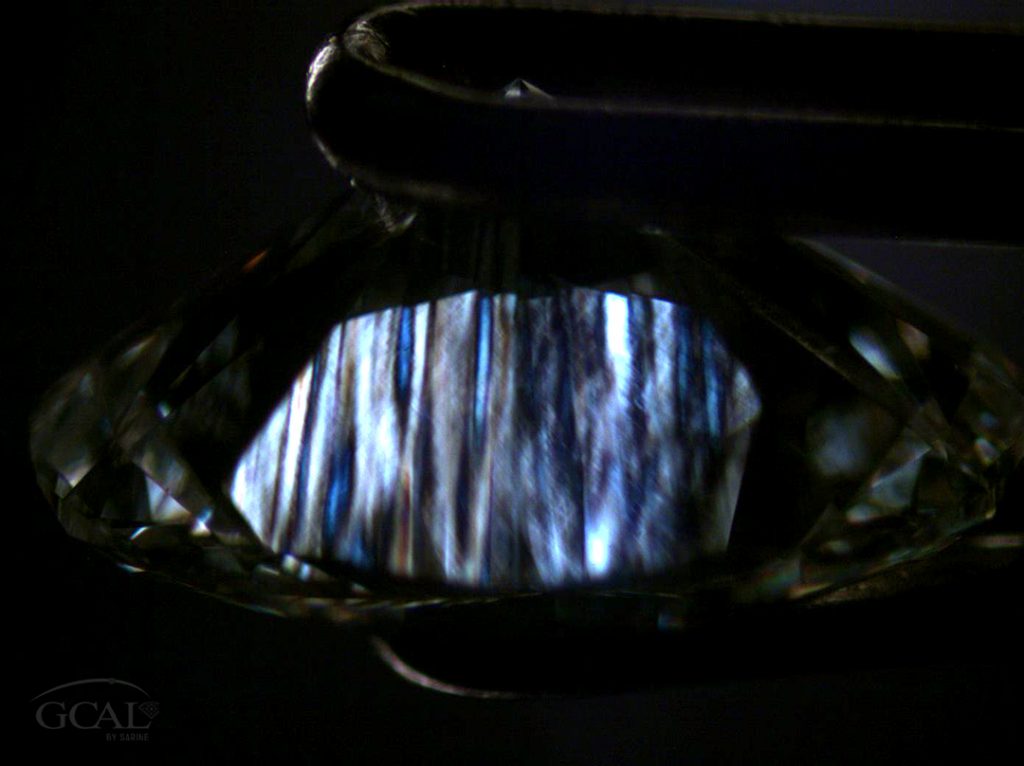
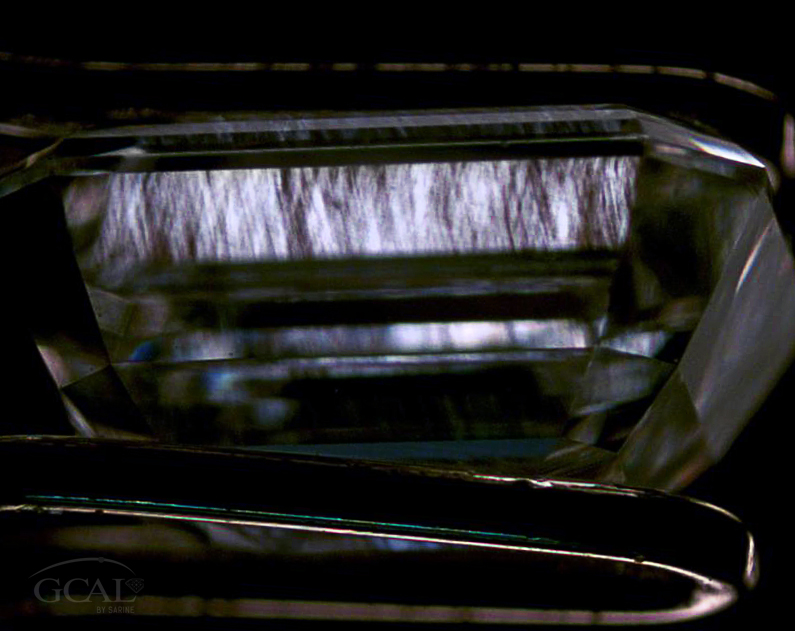
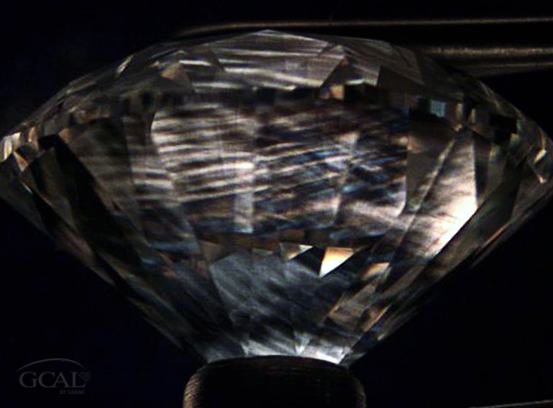
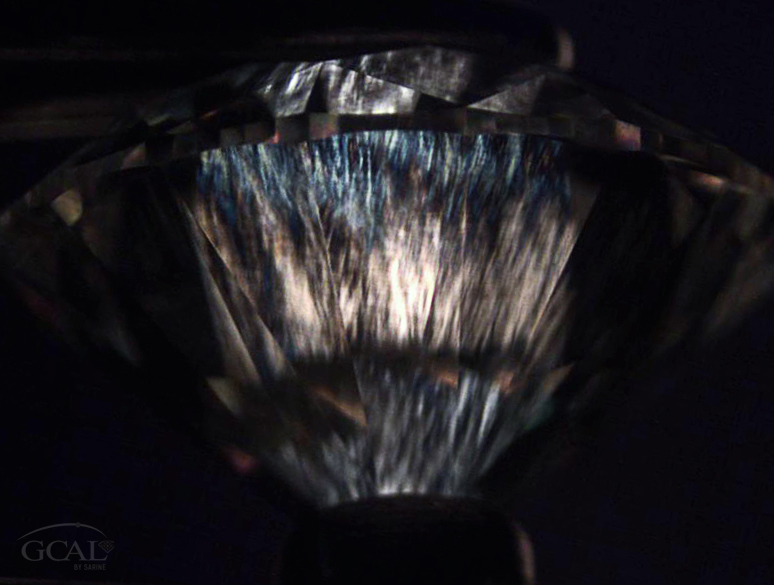
HPHT diamonds, on the other hand, are formed in a perfectly consistent High Pressure, High Temperature environment- one more perfect than any growth environment seen in nature. For this reason, HPHT diamonds do not show any structural strain- only the occasional strain around flux inclusions, due to their effect on the crystal structure around them. They’ll appear almost entirely inert between cross polarized filters.
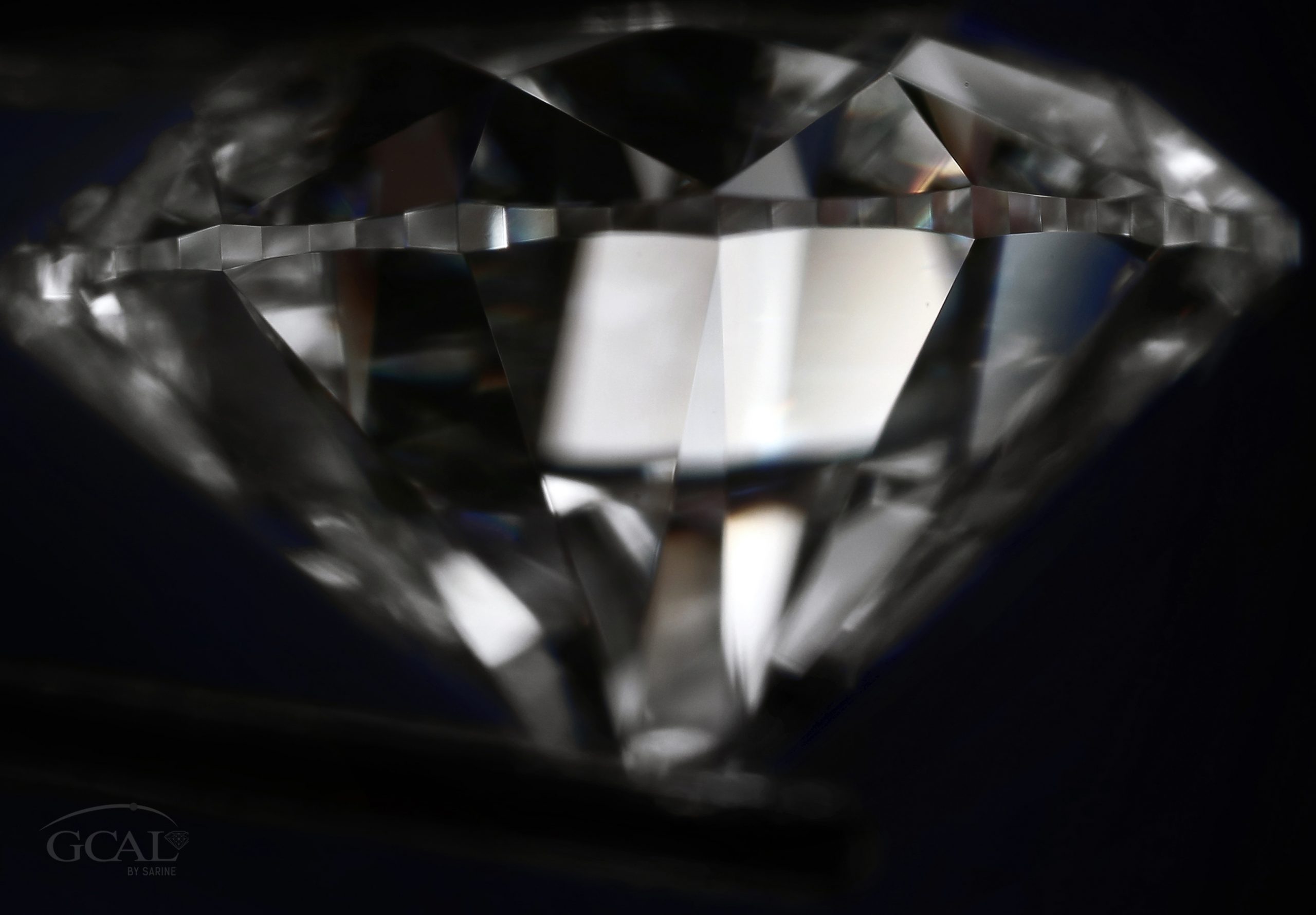
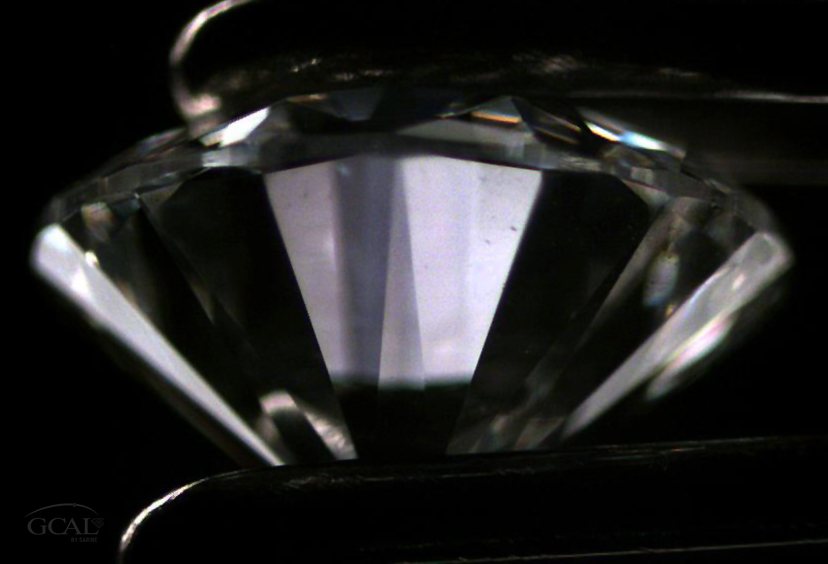
Heavy treatment can alter these results from what’s typical. It’s important to remember that we never use these filters as the only tool for identifying laboratory growth method- they are best used as a confirmation tool, along with other testing such as photoluminescence spectroscopy.
What about natural diamonds?
Unlike the binary reaction we see with lab grown diamonds, natural diamonds can show a wide variety of reactions with cross polarized filters. This is because the growth environments for natural diamonds, deep within the Earth, are varied. As a result, these diamonds have different types of strain put on them, different types and degrees of deformation, and different structural defects- both from lab grown diamonds, and from one another. The “type” of diamond, referring to the presence or absence of certain trace elements and how they interact with the crystal structure, can be one factor that influences these patterns. Just like with lab grown diamonds, treatments can have a major effect on the patterns as well.
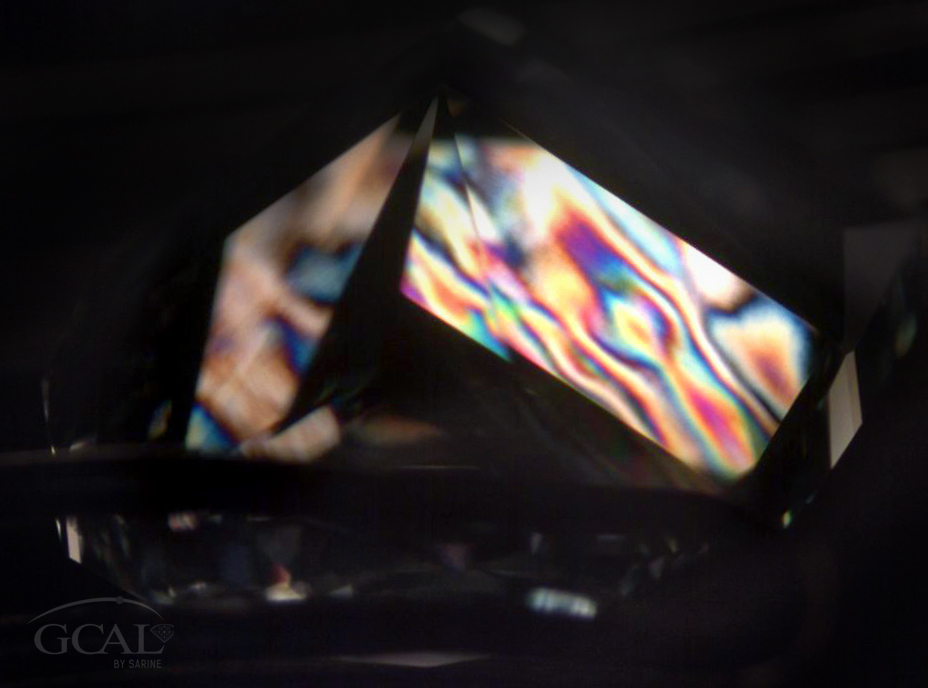
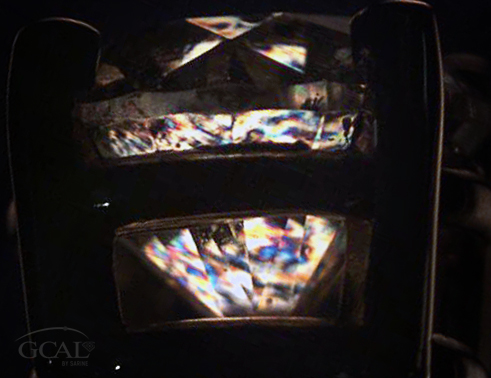
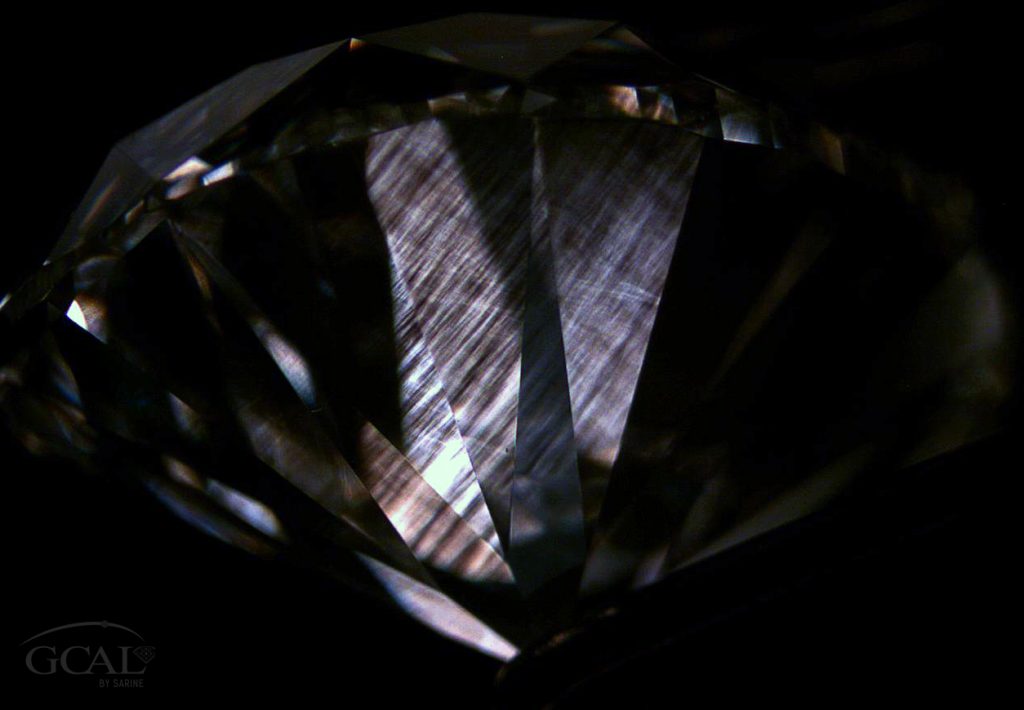

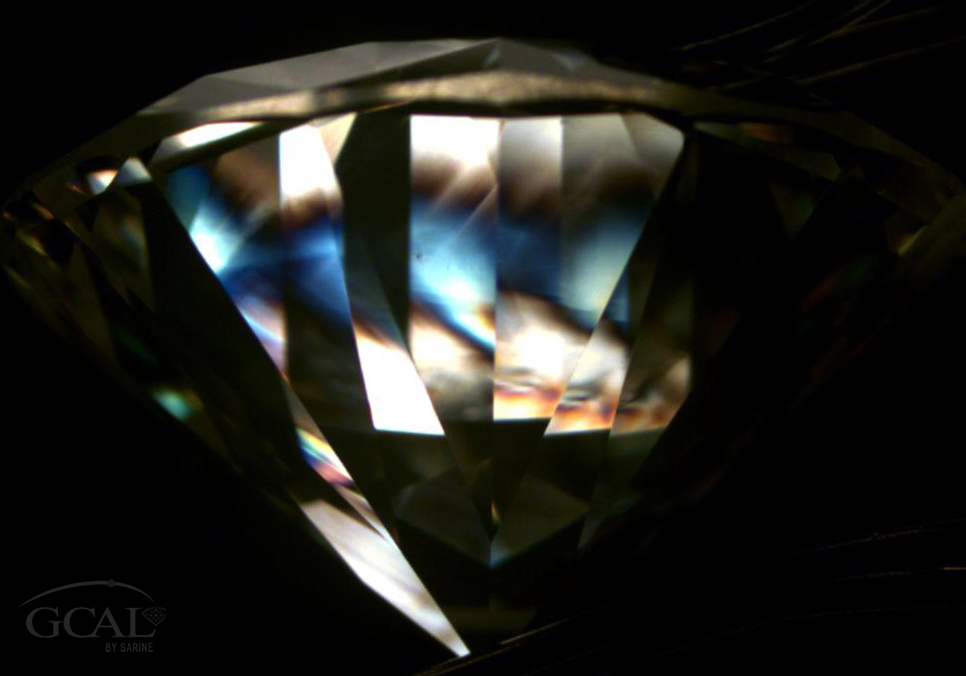
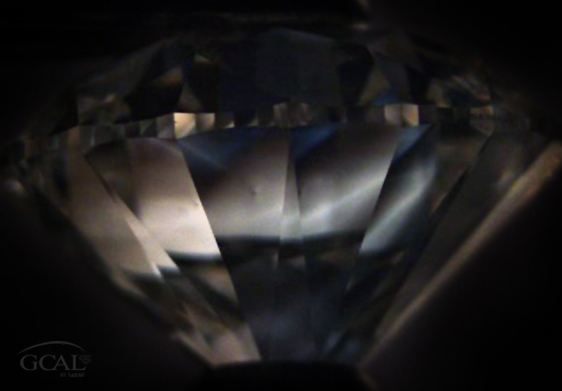
Common natural diamond patterns include:
- Soft smudges of blue and gray
- Uneven patches of color and shadow
- Pinpoint patterns with small and scattered pops of color
- Bright rainbow effects resembling oil slicks
- Cross-hatch “Tatami” patterns
Both natural Type II diamonds and CVD-grown diamonds exhibit Tatami mesh-like patterns. While there are subtle differences—natural diamonds typically show a finer, smoother texture, whereas CVD diamonds display a coarser, more layered appearance—these patterns look very similar, especially to the less experienced eye. This is why polarized filters should always be used alongside additional testing methods, such as PL spectroscopy.
If you want to dip your toes into diamond testing, cross polarized filters are a great addition to your tool kit! They’re readily available online, easy to use, and totally portable. While they should never be used in isolation to determine a diamond’s origin, they are a powerful complementary tool for confirming findings.
With this guide, you’ll now be better equipped to use cross-polarized filters effectively in diamond analysis. Happy grading!

